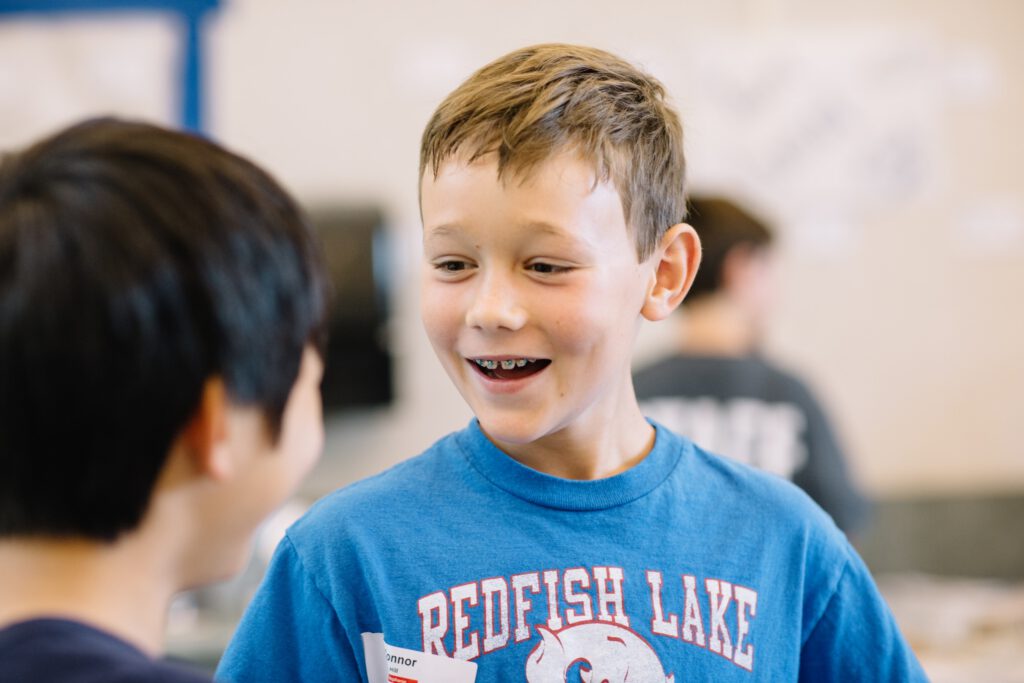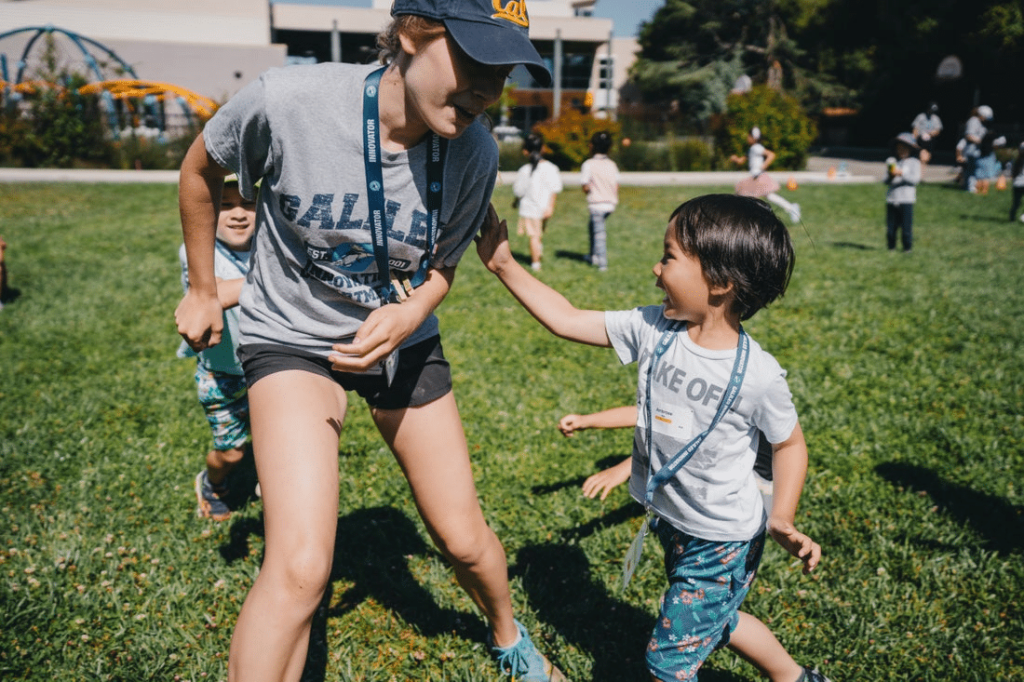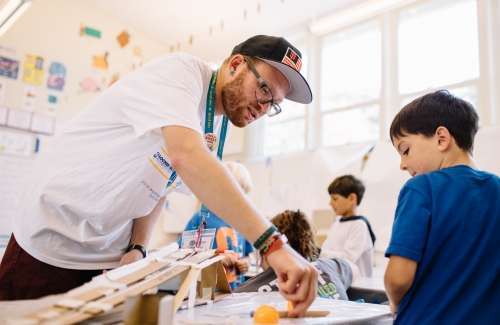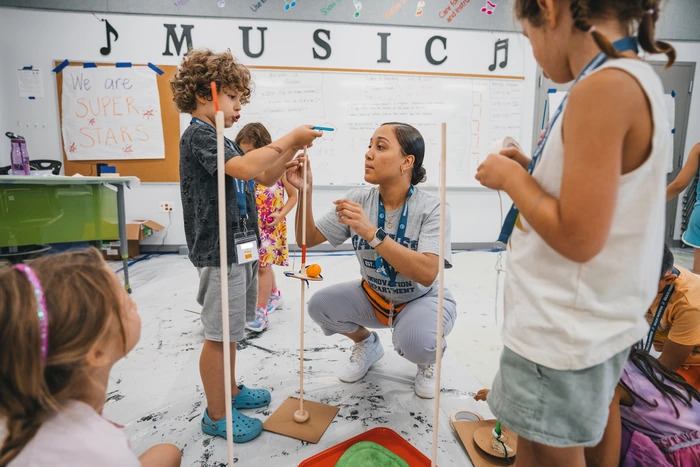Like anything that involves bringing together different people with different opinions, collaboration can be a messy process. Through our many years of facilitating team projects with thousands of kids at Galileo’s Innovation Camps, we’ve learned some essential strategies for structuring group activities designed to teach kids teamwork. Read on for tips on how to set group activities up for success.
STRATEGIES FOR SUPPORTING COLLABORATION
Make sure your activity is well suited to collaboration.
A good group activity is one where there’s enough for each person to do and it’s easy for several people to work on the project at once. There’s nothing more frustrating than having to sit around while someone else does all the work (unless it’s being the one stuck doing all that work).
Be thoughtful about group size.
Generally speaking, the more kids there are in a group, the harder it is to keep everyone communicating and engaged. Especially for younger kids (grades K – 2nd), we like to start simple by having them work in pairs.
Set good expectations in advance.
Guide fruitful collaborations with clear expectations. Here are some we like to set (and see how we model them below):
- Share your ideas and listen when others are sharing theirs.
- Give everyone a chance to share their ideas before you start.
- Be open to trying an idea you might not have thought of yourself.
- Find ways to combine different people’s ideas into one great idea!
- Do your part to help the group.
Model those expectations.
Rather than just listing dos and don’ts, choose a volunteer to help you model expectations. With younger kids, role-play what effective vs. ineffective collaboration might look like. With older kids, you can ask them what types of things you should say when you’re being collaborative.
Deal with disagreements productively.
Remember that disagreements are a normal part of collaboration—not a sign that things have gone wrong. When handled productively, they can be an important part of the process, airing people’s different opinions and pushing the activity forward. If group members are disagreeing, here are a few strategies we like to use to create learning moments and quell frustrations:
- Ask team members to reiterate each other’s ideas. Sometimes disagreements come from a simple misunderstanding.
- Explain to the group how ideas can have many parts. See if it works to put two people’s ideas together completely. If it doesn’t, have them try picking just one part of each person’s idea and put those together.
- Rapidly test both ideas. Each person can build their idea quickly and then test to compare. Or the team can pick one idea to start with, then move on to the second.
- If they really can’t agree and don’t have time to build two different ideas, they can play a game like Rock, Paper, Scissors to decide how to move forward.
Ask guiding questions.
Questions related to valuing the perspectives of others:
- Tell me about your partner’s idea. What’s one thing you like about that idea?
- How might you combine these two ideas? What parts can you use from each?
- What does your partner think?
Questions related to building on ideas:
- Tell me about your design. What ideas have you gotten from looking at other people’s designs?
- What ideas have you seen someone else using that might make your design even cooler?
- How might you add your own twist to something you saw someone else do?
- What’s one part of someone else’s project that you really like? What new ideas does it give you?
Questions related to supporting a team:
- What job can you do that will help make your group’s project better? What does your team need help with?
- Tell me about how you’re helping your team.
- What are you good at? Who can you help by sharing that skill?
Debrief the activity.
At the end of the activity, ask kids to explain how they collaborated and to reflect on how that helped make their project better. This practice helps them cement the process in their mind, see the value of collaboration and makes it more likely they’ll practice it again in the future.
With any group project you’re facilitating, the overall lesson to emphasize with kids is that collaboration is a skill we all have to practice and get better at. It can often feel easier just to push forward, working alone without considering other ideas or risking a bruised ego. But with some practice, working together can yield better—even incredible—results.





